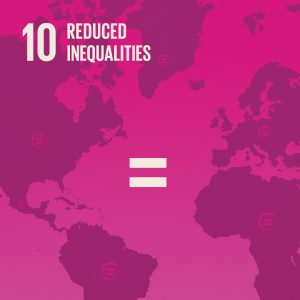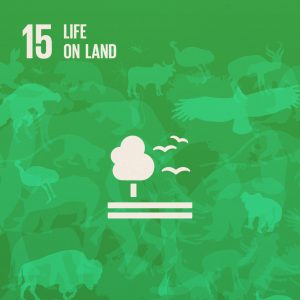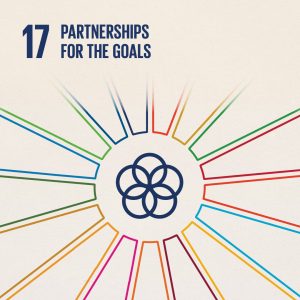By Ryan Thomson.
What some people view to be progress, others call ruin. And visa-versa. The line between development and destruction has largely become a matter of perspective. You do need not to be a fervent conservationist or “tree hugger” to prefer an untamed river to a glass condominium. Conversely, you do not need to be a real estate agent to favor to a commercial enterprise over a forest. Put differently, the grand development narratives of the past have given way to local struggles over land use and planning decisions. These land-use decisions highlight the way the physical environment often reflect the will of those who have power to dictate how land gets used.
This green conflict and shift in land-use planning speaks directly to the United Nations Sustainable Development Goal 15 which aims to “Protect, restore and promote sustainable use of terrestrial ecosystems, sustainably manage forests, combat desertification, and halt and reverse land degradation and halt biodiversity loss.” This commendable objective will undoubtably take several generations to implement and in doing so, careful attention must be paid to the social undercurrents implied with such an undertaking. Accordingly, I’d like to raise the question “sustainable for who?”
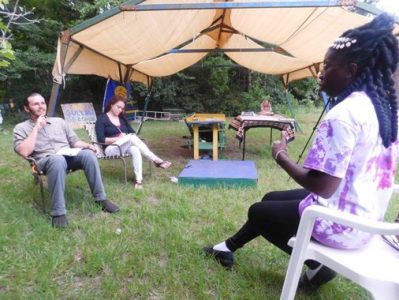 Over the past several years, I have had the privilege of getting to work with the Gullah/Geechee, an Afro-indigenous Nation who have resided on the Atlantic Sea Islands since the slave era. While a diasporic community, their customs have become deeply intertwined with their lands and thus culturally native. Their subsistent agriculture and aquaculture traditions integrate tradition and technology into an alternative culture distinct from many communities residing on the mainland. They have their own language, religious traditions, and cultural traditions. While visiting their islands and the surrounding Lowcountry, I have learned a great deal about the importance of tradition, community, storytelling, and sustainability. In reading the work of Queen Quet, Chieftess and Gullah/Geechee Head of State, I came across the term ‘destructionment’ in one of her earlier books. It is a now popular portmanteau term used to describe “the act of those that self-identify as “developers” entering communities to bulldoze the native and indigenous cultural landscape under the guise of developing said areas when they are engaging in massive environmental impacts and the removal of the historical legacy of the people that were native and often sacred to the area.” The idea is simple and speaks from a place of experience.
Over the past several years, I have had the privilege of getting to work with the Gullah/Geechee, an Afro-indigenous Nation who have resided on the Atlantic Sea Islands since the slave era. While a diasporic community, their customs have become deeply intertwined with their lands and thus culturally native. Their subsistent agriculture and aquaculture traditions integrate tradition and technology into an alternative culture distinct from many communities residing on the mainland. They have their own language, religious traditions, and cultural traditions. While visiting their islands and the surrounding Lowcountry, I have learned a great deal about the importance of tradition, community, storytelling, and sustainability. In reading the work of Queen Quet, Chieftess and Gullah/Geechee Head of State, I came across the term ‘destructionment’ in one of her earlier books. It is a now popular portmanteau term used to describe “the act of those that self-identify as “developers” entering communities to bulldoze the native and indigenous cultural landscape under the guise of developing said areas when they are engaging in massive environmental impacts and the removal of the historical legacy of the people that were native and often sacred to the area.” The idea is simple and speaks from a place of experience.
This forced removal is often triggered by some legal maneuvering such as forced tax sales, forced partition sales, and heirs’ property seizures which effectively strips locals of their land for a fraction of the lands market value. The original concept has many advantages for a rural sociologist like me. Foremost, it’s materialist grounding focused on rural ecosystems (the Celebration trees where federal rights were bestowed, the informal footpaths connecting family houses, and even grandma’s favorite fishing hole) in many ways provides a concept aimed at celebrating the values and attachments of rural communities. In many ways, destructionment provides a parallel critique to gentrification but with greater emphasis on small towns and countryside communities.
What is sustainable land-use for developers is often not sustainable for local Gullah/Geechee communities. Many retirees from the North couldn’t seem to care less about the bulldozing of a sacred tree or beloved local fishing spot, so long as their waterfront view grants them solace after a long career.
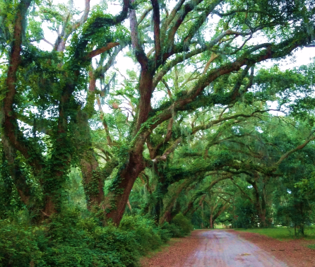
Several million people return for the summer months while many locals can no longer to afford to live on the island their parents called home. Private gated communities and luxury golf courses have displaced hundreds of Gullah/Geechee residents from their Freetown on Hilton Head Island over the past half-century. The land is hardly recognizable, some bizarre examples of development entirely removed from local traditions is Latitude Margaritaville and Disney’s 1930’s themed resort. Such resorts are relatively energy efficient, solar powered, and in some cases even LEED platinum certified. And while these are good things, it doesn’t mean it is socially just or sustainable for native populations.
Many outsiders have built into the marshes to the detriment of local traditions and often have their structures washed away after the first king tide or hurricane. Even the retirement houses built right up to the edge of the marshes damage the local ecosystem through unintended erosion and present serious threats to the regeneration of local species such as oyster beds and blue crab. Several celebrated fish use these wetlands to spawn and for nurseries including redfish, sea bass, speckled trout, and flounder. These developmental shifts in the coastline are compounded by commercial overfishing. My research finds that anytime the Gullah/Geechee speak out against such nearsighted decisions, they are quickly discounted as “emotional natives” who do not understand what sustainability means.
Mainland definitions of ‘sustainability’ tend to focus exclusively on power efficiency but in many ways neglect the social undercurrents needed for sustaining the surrounding community, their unique culture, and symbiosis with the surrounding environment. The local needs of the Gullah/Geechee are inseparable from the ecosystems which they proudly maintain and depend upon. Across the South, there are many underserved, often rural, communities who have not received the same level of investment as their urban and suburban counterparts. In response, these communities often turn to each other as a source of social and human capital in the absence of financial and built capital. Put differently, the human dimension is crucial to truly understanding sustainability.
Famed Yale scholar Dorceta Taylor’s work has explored how environmental claims made by the conservation movement and early ‘green policies’ have been used to displace communities further exacerbating race, class, and gender discrimination. Queen Quet’s concept of destructionment builds directly on this history to further critique how ‘sustainability’ has been (and is currently) being used to strip property from Black landowners. And despite the claims made by many developers regarding green architecture of their proposed gated developments, Gullah/Geechee land is not simply uninhabited brush and shrubland. It is home to one of the most culturally unique and ecologically grounded communities in the country. Placed-based attachment to this exceptional land can (and has been) traced back over centuries. Even among the parcels currently uninhabited, many locals take care and maintain these lands and coastal estuaries in the tradition of those who came before them.
When the UN Sustainability Goal specifies rebuilding reefs, I think of the Gullah/Geechee oyster planting celebrations as a template to be explored elsewhere. When I hear conserving forests to prevent coastal erosion and further biodiversity loss, I am reminded of community members showing up to a court house with all the resources they can muster to help keep the land and boarding marsh in the family. Sustainability within land-use planning means ensuring that those most impacted by changes are informed, consulted, and respected at all levels; even at the risk of denying a chance to further leverage private profit. To come full circle, what is sustainable for a growing city, often contradict what is sustainable for the smaller community just outside the city lines. Sometimes to see the true value of a piece of land, one should simply visit an island.
For more information, please visit:
https://gullahgeecheenation.com/
http://www.sainthelenagullahgeechee.com/
Post contributed by Ryan Thomson, Assistant Professor, Agricultural Economics & Rural Sociology
Learn about the SDGs & AU and Auburn’s contributions related to this post.

